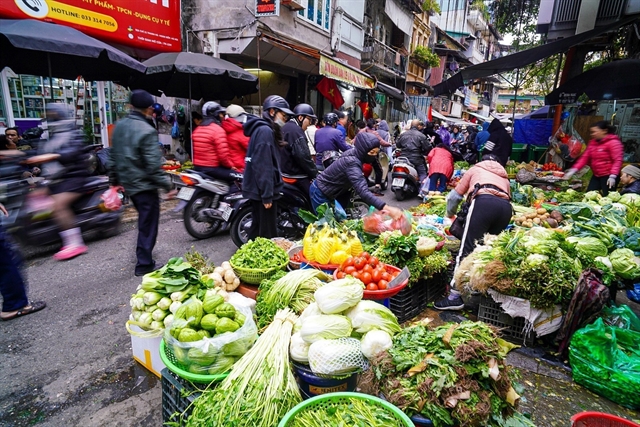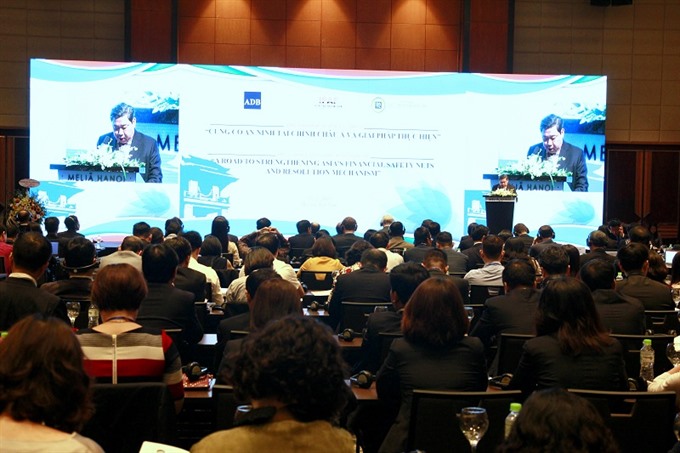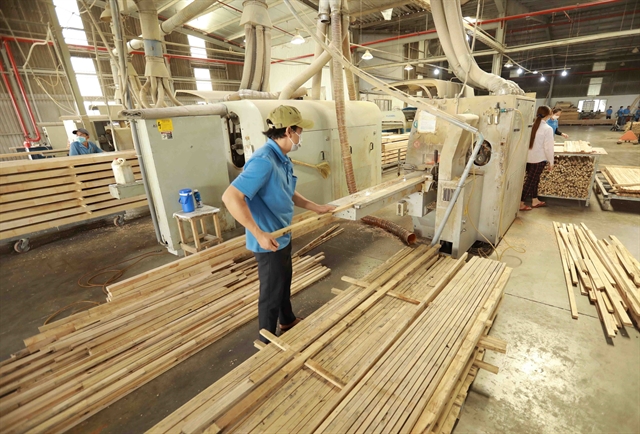 Economy
Economy

Bad debts in Việt Nam are being tackled thoroughly but there are still many insufficiencies in the handling work.
 |
| A view of the International Public Asset Management Company Forum (IPAF), held in Hà Nội on Thursday. - VNS Photo Linh Anh |
HÀ NỘI — Bad debts in Việt Nam are being tackled thoroughly but there are still many insufficiencies in the handling work.
Phạm Mạnh Thường, Deputy Director of Việt Nam’s Debt and Asset Trading Corporation (DATC), made the statement at a forum held in Hà Nội on Thursday.
The forum, themed “A Road To Strengthening Asia’s Financial Safety Net And Resolution Mechanism”, gathered policy-makers, international experts and representatives of asset management companies from five Asian countries, discussing financial security and the handling of bad debt in the Asian region.
Representatives from China, Kazakhstan, the Republic of Korea, Thailand and Việt Nam attended the forum, organised by DATC, Việt Nam’s Ministry of Finance and the Asian Development Bank (ADB).
Thường said, since its inception, the DATC had handled over VNĐ90 trillion in domestic and foreign debts, and supported more than 3,000 debt-processing enterprises in the process of equitisation.
He said that the amount of bad debts at banks had dropped dramatically, down from 7.7 per cent at the end of 2017 to 6.67 per cent at the end of June this year, equivalent to VNĐ486 trillion (US$20.8 billion).
“However, this figure reflects the size of bad debts in credit institutions, not reflecting the level of bad debts in the economy. The DATC is a supporting entity, so the outlook on bad debt for the economy is not only bad debt among creditors but also the debts of the states,” Thường said.
These state debts are difficult to handle and different from the way commercial bad debts are dealt with, that sometimes causes a breakdown of corporate restructuring.
“The government should apply a market mechanism to deal with state debts in a similar way to how commercial debts are dealt with, while simultaneously recovering debt as well as protecting businesses,” Thường said.
With the growing trend of enterprises taking out foreign loans, the scale of the debt that needed to be dealt with was increasing and becoming transnational. Therefore, there should be a mechanism that helped countries co-ordinate and co-operate in debt processing. We need an Enterprise Reconstruction Fund or Bad Debt Recovery Fund with the participation of investors and asset management companies from the countries involved, he said.
Rising risks
At the forum, participants agreed that the Asian financial markets are also experiencing fluctuations due to changes in the global financial system.
“Developing Asia will continue solid growth of 6 per cent in 2018 and 5.8 per cent in 2019, thanks to robust consumption and expanding services boosting growth in China and India,” said Arief Ramayandi, senior economist of the ADB at the forum.
“However, the region is experiencing downside risk stemming from the escalating US-China trade conflict,” he said, adding that heightened global uncertainty exposed pockets of vulnerability that could precipitate a potential future financial crisis.
“The good news is inflation in the Asian region is still in check despite rising global commodities prices, maintaining at 2.8 per cent until 2019,” he said.
Ramayandi said that increased trade tensions between China and the US had significantly affected the GDP outlook for China. According to ADB’s initial forecast, in the next two to three years, China’s GDP may fall by 0.5 per cent, if excluding the impact of trade conflict. But if tensions escalate, the country’s GDP may drop 1.3 per cent.
According to Sebastian Eckardt, lead economist and programme leader of the World Bank Việt Nam, an escalation of global protectionism would hurt growth prospects.
“Heightened financial market turbulence, due to faster interest rate increases in the US, will also complicate macro economic management. The interaction of these risks could exacerbate short-term vulnerabilities and hurt growth further,” he added.
Eckardt said regional countries should mitigate macro-financial vulnerabilities, maintaining exchange rate flexibility, strengthening financial sector regulatory and oversight frameworks, building prudent fiscal buffers and strengthening debt sustainability by improving collection and spending efficiency.
They also needed to redouble regional commitment to an open and rules-based international trade and investment system, he said.
The IPAF was launched in May 2013 through an initiative of six asset firms from China, Kazakhstan, the Republic of Korea, Thailand and Việt Nam. The forum was established to provide opportunities for collective actions to address regional economic issues through knowledge sharing and partnership development among its members.
The forum aims to reinforce regional asset management companies through capacity building through annual summits and conferences, training courses and research papers. — VNS




